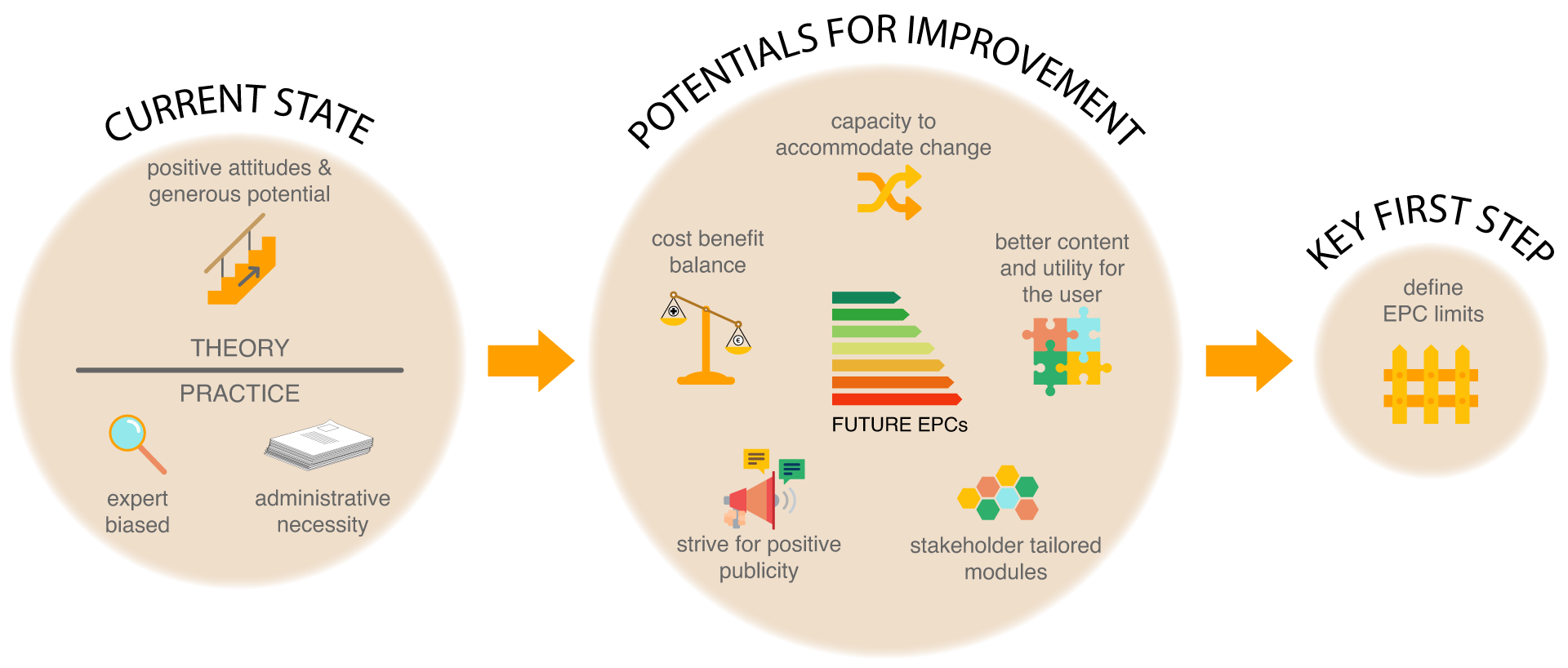

EPCs for the people
D2.2 Guidelines to investigate users perception about EPC scheme 1.9 MB
D2.3 Report on users’ perception on EPC scheme in U-CERT partner countries
2.3 MB
D5.3 Catalogue of user and beneficiary profiles for tool development
2.2 MB
Web workshop Building EP Certificates for the people
REHVA Journal | People-Centred EPCs for Buildings
Future EPCs
- New EPC schemes and related business models will be successful as a user-centred concept only if their value will be recognized by non-experts. In other words, if we want to make EPCs a user-centred product, they must be established and recognized as a useful tool in service of the people in their everyday life.
- EPC products and services alone, as a goal in themselves, are not enough. For optimal balance of quality, cost-effectiveness and acceptance, future EPCs need to be integrated with the broader context - firstly by defining differences and touchpoints with related concepts, services and products (such as BIM, energy audit, inspections of building services, building renovation passport, Smart Readiness Indicator, Building Digital Logbook etc.), secondly by means of innovative business models promoting and streamlining investments in building performance improvements (energy, environmental, Indoor Environmental Quality), and thirdly by integration with exiting and developing technologies.
- The quality of user experience of EPCs for general population is strongly dependant on design aspects, such as visual (graphical) representation, content (complexity and contextualization of data), language used, availability of auxiliary services (customer support), quality of certification services (interaction with EPC issuers) etc.
- Future EPCs should make energy more intuitive and influence behaviour of building users, indicating aspects which are largely being neglected or not represented clearly in the existing EPC schemes. These include health, safety, convenience, well-being, comfort etc.
- Future EPCs should accommodate a wide scope of use by offering several levels of complexity of user interface – for example basic, intermediate, advanced and expert. In combination with digitalisation, EPCs could adopt a modular design enabling users to tailor their EPCs to their needs and interests. Furthermore, digitalized EPCs could also offer interactivity with the built environment (including SRI) and potentially moderated learning progression of users, primarily by measuring the actual building performance and making the invisible aspects of human-building interaction visible and contextualized.
- The success of policies and schemes, such as the EPC scheme, largely depends on efficient coordination and collaboration between key stakeholders, strong public awareness, and practical (real) value of the EPC scheme that makes it meaningful and useful for the wide range of stakeholders and users.
- Future EPC schemes need positive promotion and publicity supported and generated by designated strategic promotional and marketing strategies and funds.
